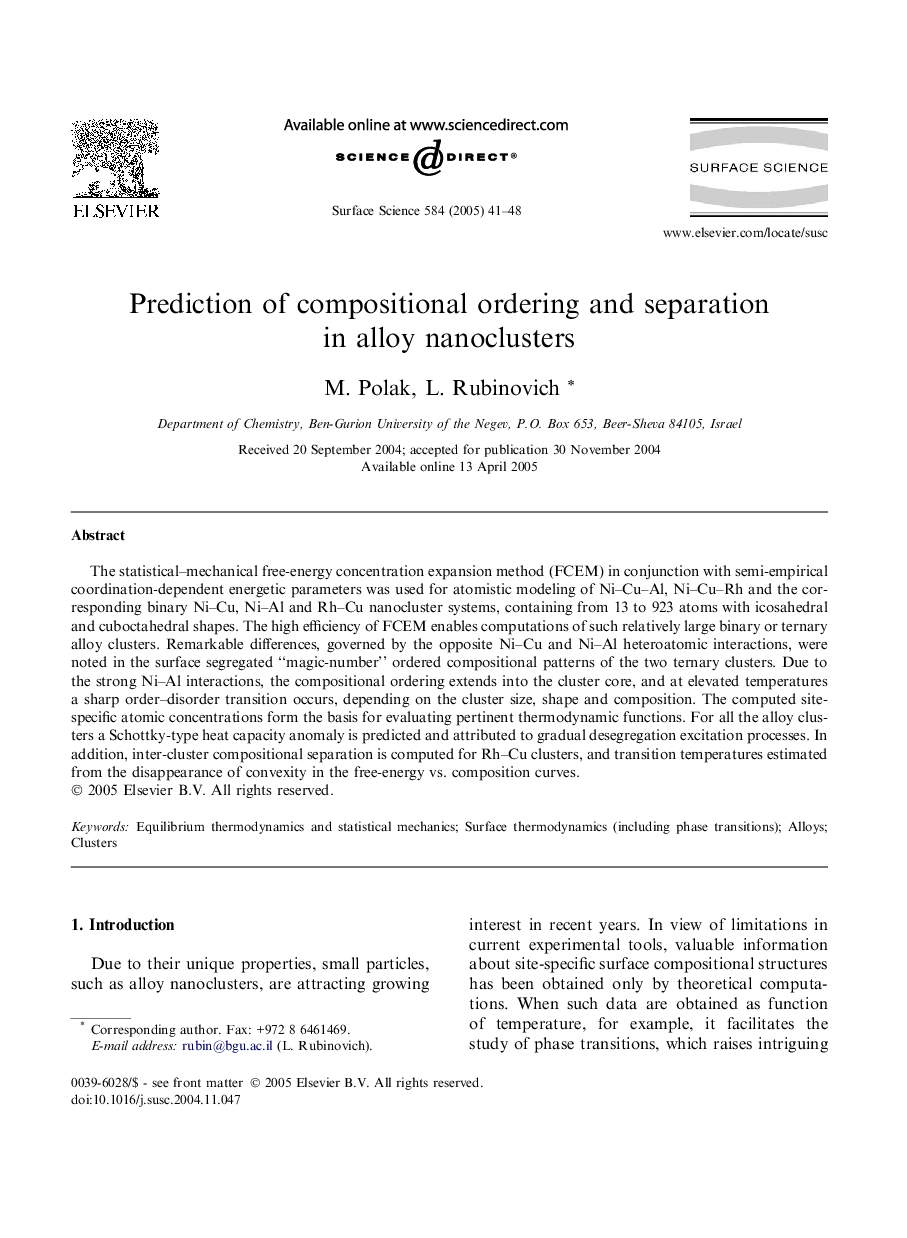| Article ID | Journal | Published Year | Pages | File Type |
|---|---|---|---|---|
| 9595546 | Surface Science | 2005 | 8 Pages |
Abstract
The statistical-mechanical free-energy concentration expansion method (FCEM) in conjunction with semi-empirical coordination-dependent energetic parameters was used for atomistic modeling of Ni-Cu-Al, Ni-Cu-Rh and the corresponding binary Ni-Cu, Ni-Al and Rh-Cu nanocluster systems, containing from 13 to 923 atoms with icosahedral and cuboctahedral shapes. The high efficiency of FCEM enables computations of such relatively large binary or ternary alloy clusters. Remarkable differences, governed by the opposite Ni-Cu and Ni-Al heteroatomic interactions, were noted in the surface segregated “magic-number” ordered compositional patterns of the two ternary clusters. Due to the strong Ni-Al interactions, the compositional ordering extends into the cluster core, and at elevated temperatures a sharp order-disorder transition occurs, depending on the cluster size, shape and composition. The computed site-specific atomic concentrations form the basis for evaluating pertinent thermodynamic functions. For all the alloy clusters a Schottky-type heat capacity anomaly is predicted and attributed to gradual desegregation excitation processes. In addition, inter-cluster compositional separation is computed for Rh-Cu clusters, and transition temperatures estimated from the disappearance of convexity in the free-energy vs. composition curves.
Keywords
Related Topics
Physical Sciences and Engineering
Chemistry
Physical and Theoretical Chemistry
Authors
M. Polak, L. Rubinovich,
